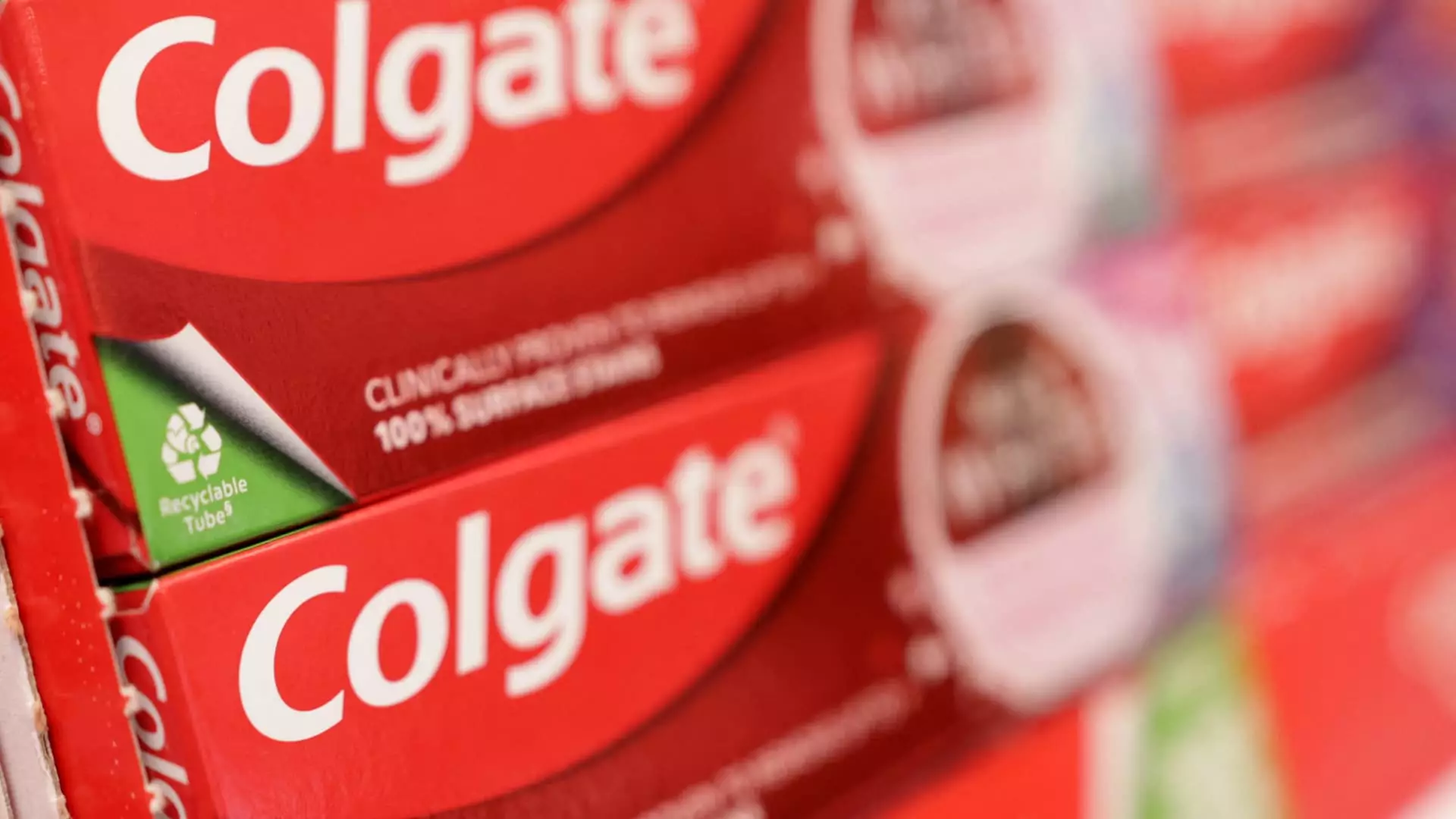The stock market’s midday trading often serves as a reflection of investor sentiment, particularly in response to recent earnings reports and forecasts. Notably, Colgate-Palmolive’s shares faced a significant downturn of 4% following the announcement of its fourth-quarter revenue that fell short of analysts’ expectations. The household products giant highlighted concerns regarding anticipated weak sales for 2025, primarily due to adverse foreign exchange rates. This insight underscores how global economic variables play a pivotal role in influencing corporate revenue forecasts, affecting investor confidence and stock performance.
In contrast, KLA Corporation witnessed a positive reaction, as its shares rose by 2%. The semiconductor company achieved both top-line and bottom-line results that surpassed expectations for the fiscal second quarter. Its reported adjusted earnings of $8.20 per share and revenue of $3.08 billion outperformed analysts’ expectations, marking a robust performance in a highly competitive space. This highlights a resilience in the semiconductor sector, which remains crucial for technology and manufacturing industries, even amidst broader economic uncertainties.
Vertex Pharmaceuticals made significant strides in the biotech arena, with its stock soaring by 7% after receiving U.S. Food and Drug Administration approval for a novel non-opioid painkiller pill. This approval marks a substantial breakthrough as it is the first of its kind in decades, offering a new alternative for pain management without the associated risks of addiction. The market’s enthusiasm for Vertex reflects how innovative approaches in healthcare can generate substantial investor interest, particularly in sectors focusing on public health challenges.
Conversely, Deckers Outdoor faced a daunting 17% drop in its shares. While the parent company of Ugg and Hoka increased its full-year revenue guidance to $4.9 billion, it nonetheless fell short of analysts’ expectations of $4.93 billion. Despite a promising fiscal third quarter that beat Wall Street’s estimates, the market reacted negatively to the guidance, demonstrating how future expectations often weigh heavily in investor decision-making processes, even when past performance appears solid.
AbbVie’s stock surged by 6% following strong fourth-quarter results that exceeded analyst expectations. The pharmaceutical company reported adjusted earnings of $2.16 per share compared to the anticipated $2.12, coupled with a commitment to maintain a high single-digit compound annual revenue growth rate up to 2029. AbbVie’s strong performance reveals how investor confidence can be bolstered by consistent growth projections in the pharmaceutical sector, particularly in light of evolving regulatory landscapes and competition.
On the other hand, Walgreens Boots Alliance saw its shares plummet over 7%. The struggling pharmacy chain announced the suspension of its quarterly cash dividend as part of its “long-term turnaround efforts.” This drastic measure indicates the challenging landscape in which Walgreens operates, with efforts directed towards debt reduction and improved cash flow. Such moves, while necessary for financial health, can often unnerve investors, culminating in immediate stock price declines.
Chevron, a stalwart in the energy sector, shed 3.8% after reporting earnings that fell short of expectations. While the company announced adjusted earnings of $2.06 per share, they were below the $2.11 forecasted by analysts. A notable point of concern was the loss recorded in its refining business, which had not encountered a downturn in four years. However, Chevron’s revenue did surpass consensus estimates, coming in at $52.23 billion. The mixed signals from Chevron’s earnings highlight the complexities within the energy sector, especially with fluctuating oil prices and economic uncertainties affecting performance.
Beazer Homes faced a 16% decline in shares after posting fiscal first-quarter earnings that fell below consensus expectations. Its earnings of 10 cents per share lagged behind the expected 31 cents despite revenue exceeding projections. This discrepancy raises concerns about the housing market’s resilience amid rising interest rates and economic fluctuations, which could further influence investor expectations.
As we navigate through these earnings-driven market responses, several trends emerge. Innovations in technology and healthcare seem to attract investor confidence, while companies demonstrating weak revenue outlooks or significant operational challenges often face severe market penalties. This midday trading snapshot exemplifies how swiftly investor sentiment can shift, often driven by the interplay of hard data and broader economic indicators.

